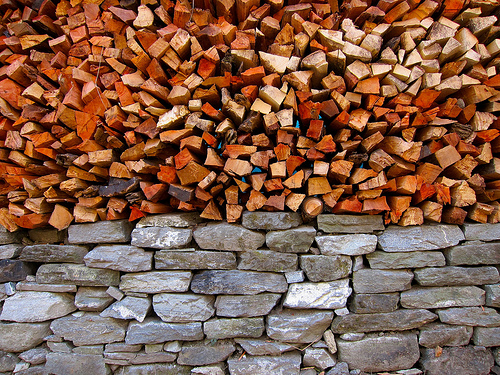Posts Tagged ‘Kindling’
Prepare Your Home(stead) for Winter

I woke at 5:15 this past Saturday. Something I rarely do. I’ve never bought into the romanticized notion of waking up before the sun if you live on a farm. But, this morning was different. A long productive work week, a relaxing movie and dinner with my sister, a chat with my friend and fellow suburban farmer about kids and school; life and the future, plus a hot soak in the tub and a sound restful night’s sleep was the perfect storm of circumstances my body needed to raise me at that hour. It’s okay though, because this weekend was about switching gears.
The first weekend in November is our traditional “get ready for winter” weekend. Regardless of the weather, it’s the time when we close the door on hot weather, cooling clothes and light meals; and hunker down to cozy blankets, fires and hearty stick to your ribs meals.
It was still dark when I woke. Not even a sliver of daylight crested the horizon. I could feel the cold air hang over me and knew the predawn hours had dipped towards freezing. I lay in bed for awhile, thinking, snuggled down under a mound of blankets, our cat nestled at my neck, planning the day ahead. There would be much to do, making ready for winter.
When I finally emerged from my warm cocoon, at 5:30am, the furnace had already gone off several times (and it was set at 60). I slipped into a pair of sweats and a sweatshirt, pulled on a pair of warm socks and headed for the living room. Although we had stacked our outside firewood racks to overflowing I hadn’t put the wood grate back into the firebox. In spring and summer my firebox is home to a tiered wrought iron candle holder, but on the first weekend of November, the candles come out and the firewood grate goes in. Read the rest of the story »

Recent comments
Aenean nonummy hendrerit mauris. Phasellus porta.